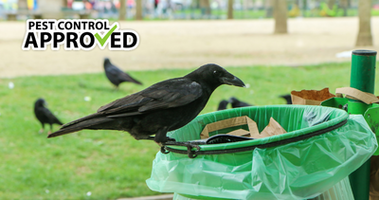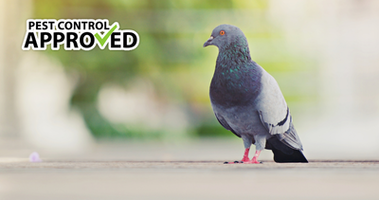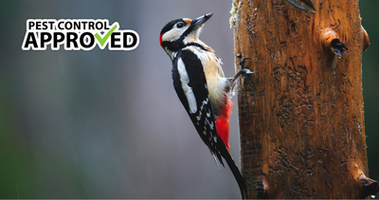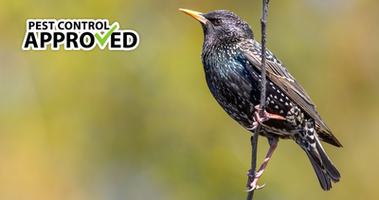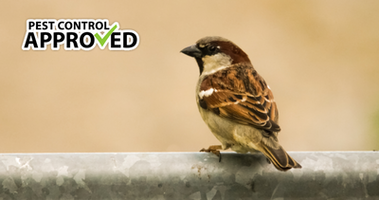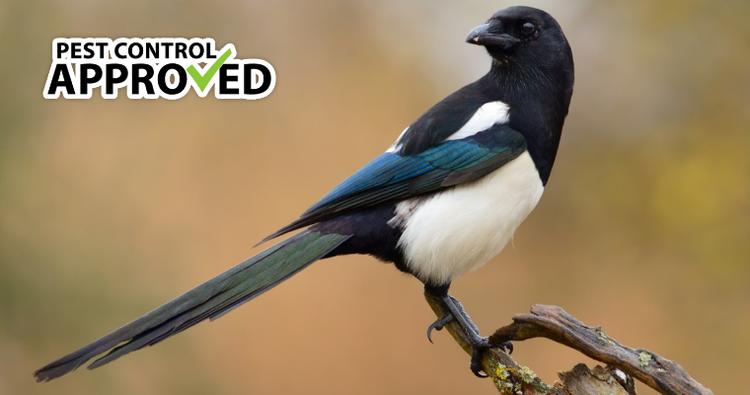
Magpies
Magpies are a large bird in the corvid (crow) family found in Western North America. They are native to North America and can survive a wide range of conditions from subarctic Alaska to desert California. They are known for their intelligence and loud vocalizations. Magpies can learn to mimic other birds and occasionally human speech. The most common magpie in Western North American is the Black-billed Magpie.
NAME: Pica hudsonia
LOCATION: Western North America
HABITAT: Various
DIET: Omnivore
SIZE: 45 – 60 cm
PREDATORS: Owls, coyotes, cats
LIFE EXPECTANCY: 4 – 6 years
Size
Magpies are a mid-sized bird approximately the size of a crow. They are between 45 and 70 cm long. They are sexually dimorphic in size. Males are 6% to 9% larger than females. Males are around 167 to 216 grams with a wingspan of 205 to 219 mm. Females are 141 to 179 grams with a wingspan of 175 to 210 mm. They are larger than jays but smaller than ravens.
Appearance
Black-billed magpies are easily recognizable by their color and size. They are about the same size as a crow with distinct black and white markings. They have black on their head and back, a white stomach, and a blue-black tail. Their wings contain a white patch on the top near their body. Their black feathers often contain iridescent blue shades.
Magpies have short, round wings and a long tail. Their tail contains many layers of overlapping feathers with the longest feathers at the tip of the tail. Their beak is smaller than a raven’s beak and has a small curve at the tip. They also have large black scaled feet that help them grip branches and jump.
Diet
Magpies are opportunistic omnivores. They will eat anything they can find. In cities, they frequently eat garbage. They also steal pet food and chicken feed. In more rural areas, they eat insects, squirrels, voles, and sometimes baby birds. Surprisingly, they sometimes kill small animals like mice and sparrows. More frequently, they eat carrion such as roadkill. They also ingest the maggots on roadkill. In winter, they eat more plants. In Canada, this includes berries, wheat, and crab apples. They will eat from birdfeeders if the platform is large enough.
When food is abundant, magpies will create small caches in the ground. They make a small hole with their beak and deposit extra food inside. This is short term storage not food stored for months. Magpies will often rob each other’s storage; squirrels and other rodents can also steal the food. Magpies are known to make several fake cashes before depositing the food.
Habitat
Magpies thrive in various habitats. Because they can live anywhere from Alaska to California, they can easily adapt to various conditions. Generally, they prefer open areas trees surrounding it like meadows or grasslands. They often nest along streams. They also use man-made structures for nesting. Barnyards or other buildings near farmland provide easy shelter and access to nearby food. They thrive in urban environments, often building nests in backyards.
Reproduction
Magpies reach mating age after two years although some mate after their first year. They generally mate for life and will reuse their nests year after year. They usually nest once unless their first nesting attempt fails. Magpie nests are large, dome shaped structures, generally high up in the trees. Unlike other birds, they often nest near each other. In most flocks, only a small percentage of the magpies breed in any given year. The rest will for form a new flock and may range 20 hectares searching for mates in other flocks.
Breeding season begins anytime from March to July, depending on the location. The female lays 6 or 7 eggs on average although up to 13 are possible. The eggs are greenish grey with brown speckling. They are about 33 mm long. Incubation is 16 to 21 days with the chicks hatching over a span of days. After hatching, the chicks stay in the nest for 3 to 4 weeks. Afterwards, they can fly but are fed by parents for another 4 weeks. Generally, they stay with their parents’ flock.
Predators
Because of their size and intelligence, magpies have fewer predators than other birds. They are able to protect themselves and their vulnerable young by nesting and living in flocks. Nonetheless, domestic cats occasionally catch a magpie while it is in the ground. Owl, ravens, and hawks are able to kill magpies in flight but prefer small prey like sparrows. Occasionally coyotes or foxes will kill a magpie in rural areas.
The biggest threat to magpies is pesticides. Magpies are particularly vulnerable to pesticides applied to cattle. Historically magpies had a symbiotic relationship with bison. They would consume ticks off bison’s backs while the bison provided protection. In modern times, magpies eat bugs off of livestock. If these livestock have been sprayed with insecticide, the magpie will consume a large, often lethal, amount of pesticide.
Lifespan
Like many birds, juveniles have a high mortality rate. Three out of seven juvenile magpies survive. They often die of starvation, predation, or failure to thrive. One past their first year, magpies’ survival rate is greatly increased. Most survive four to six years. The oldest known magpie was nine years old. Magpies are often not birds kept in captivity by Birdkeeping.


